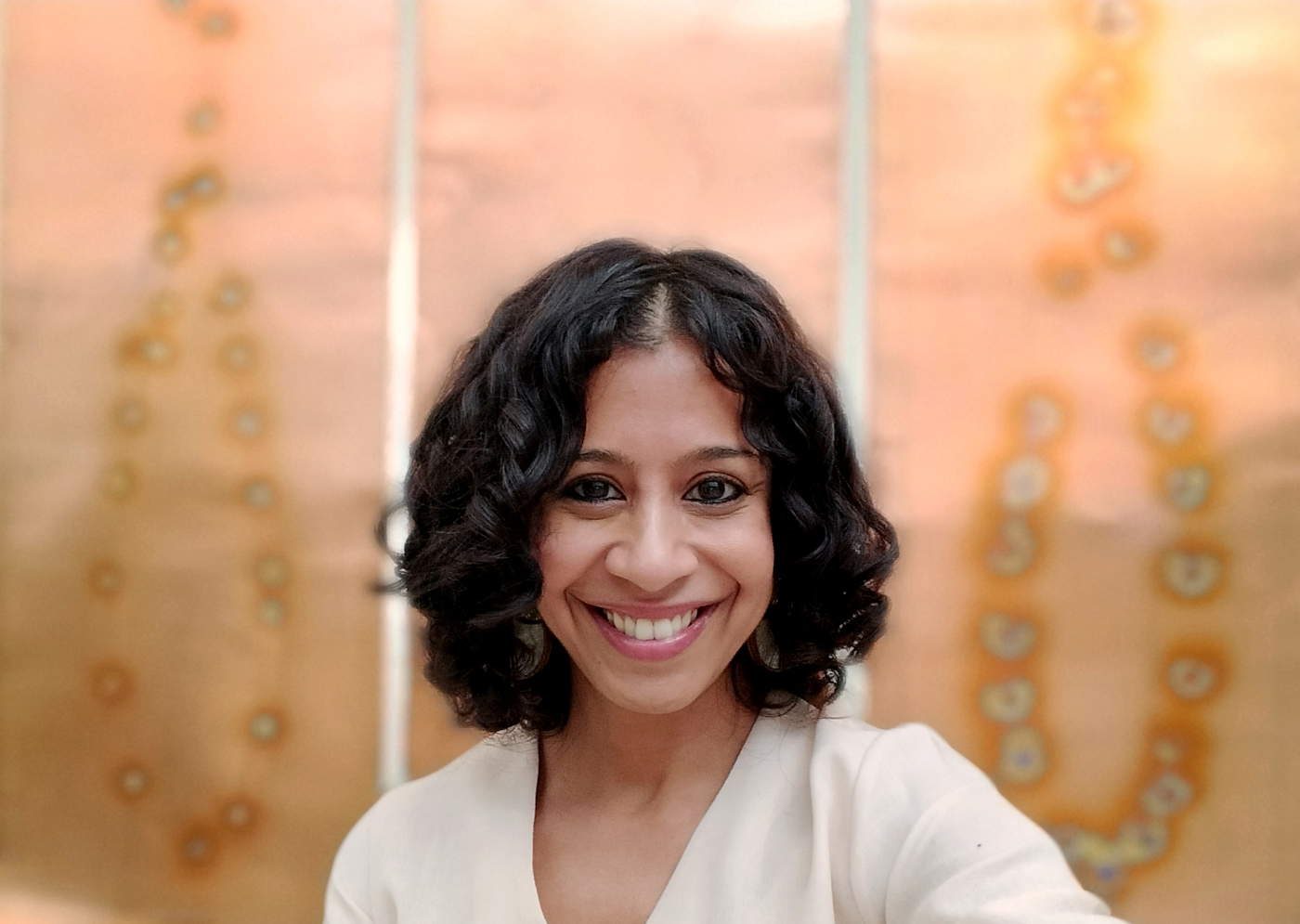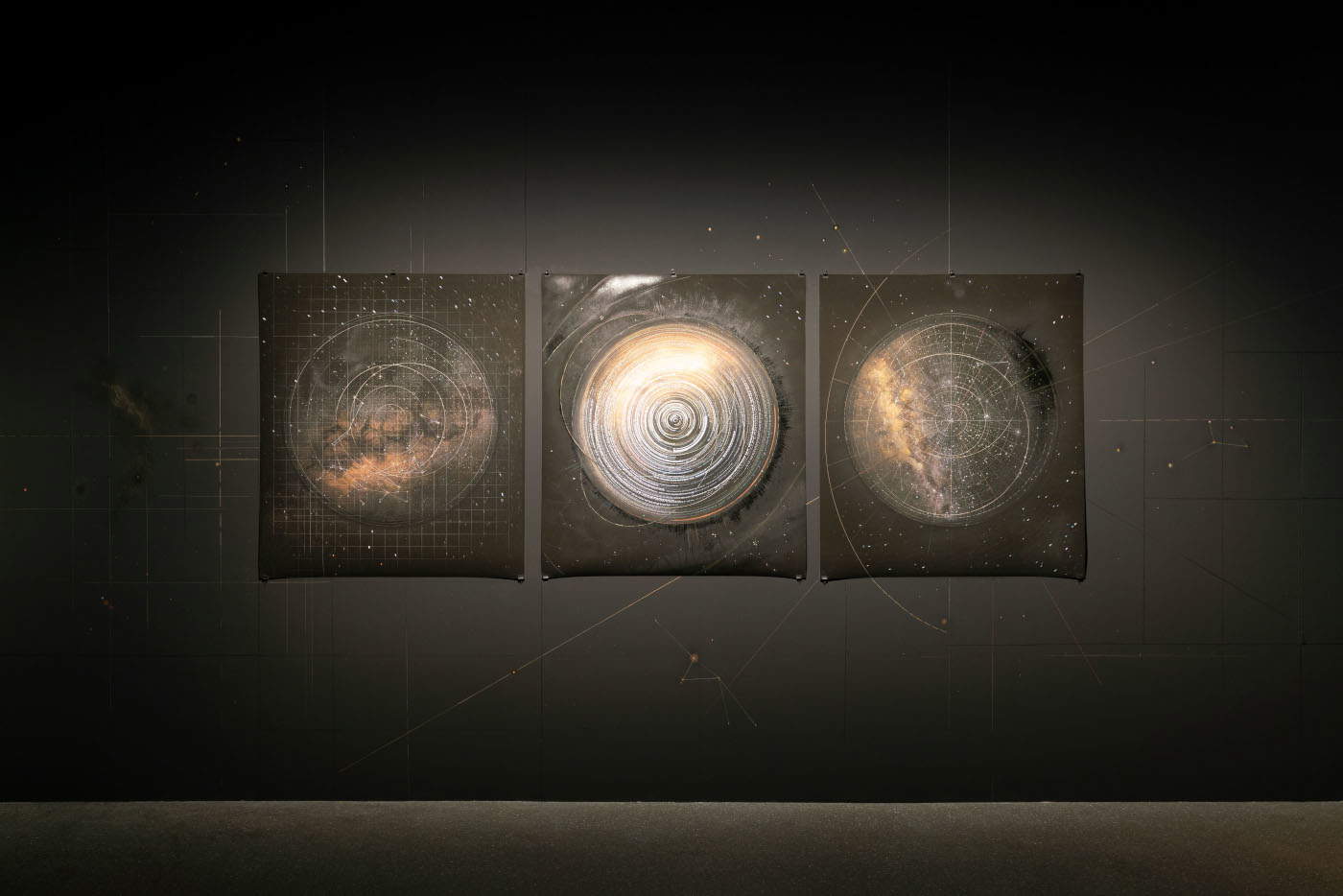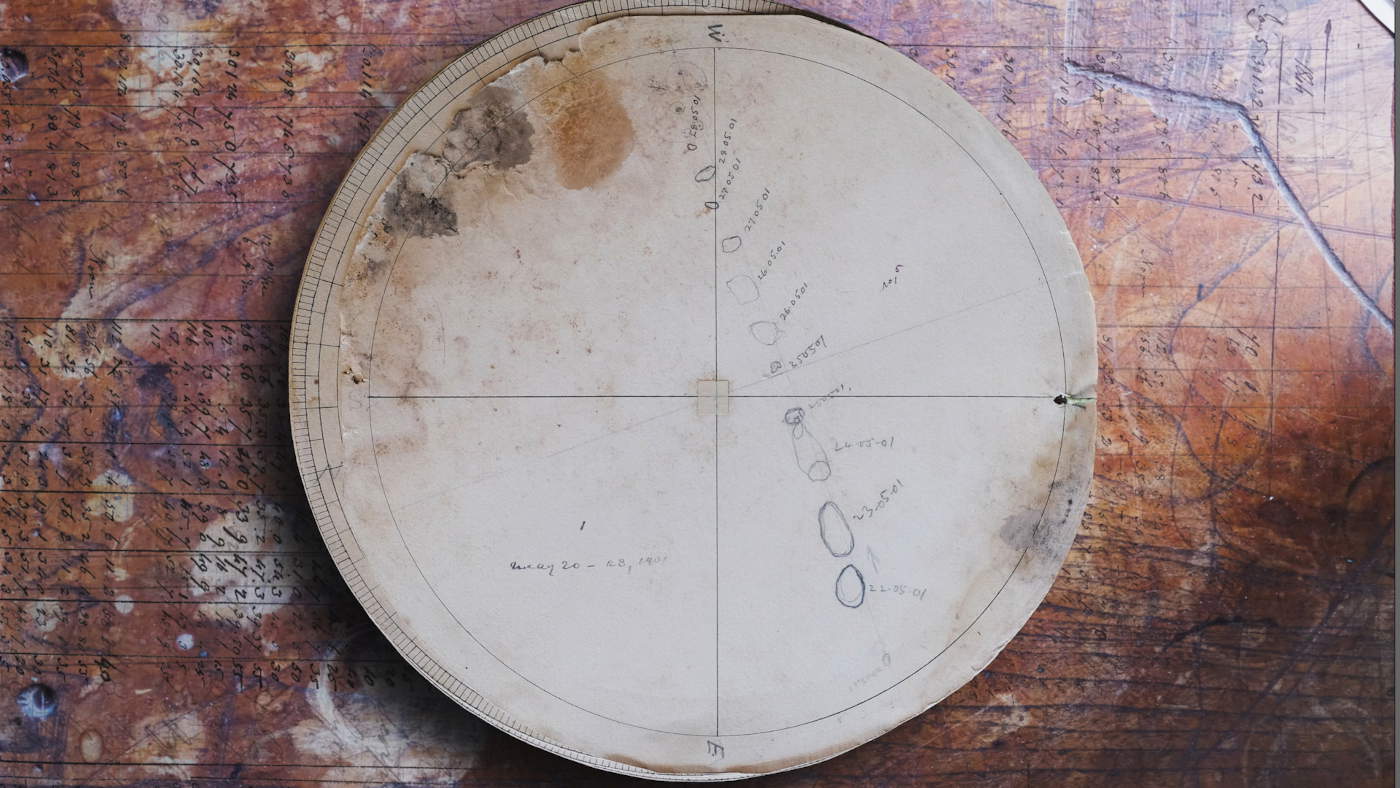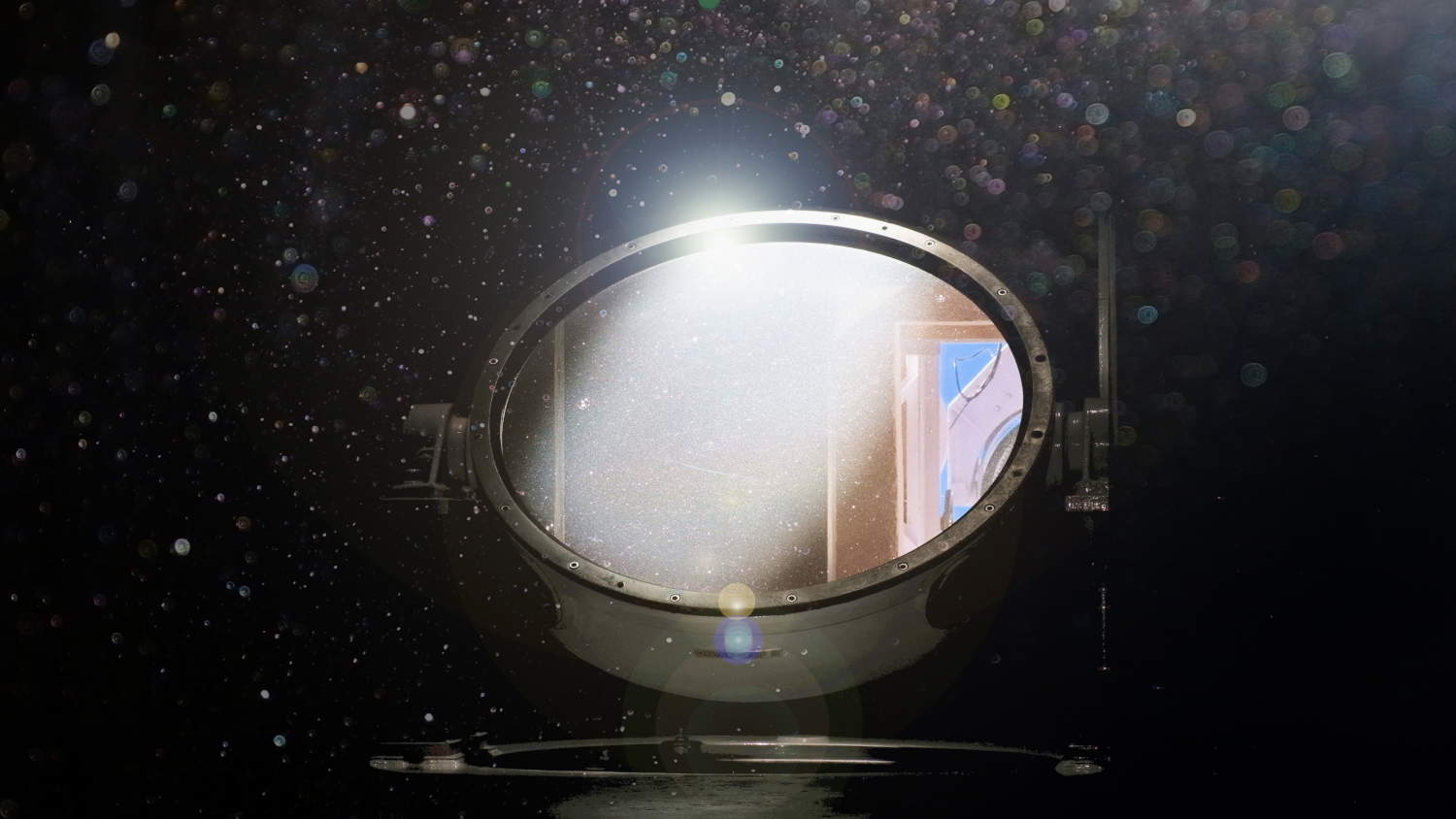From September 19 to November 2, 2025, MUDEC in Milan will host Borrowed Light, the first solo exhibition in an Italian institution by Indian artist Rohini Devasher, winner of the prestigious international “Artist of the Year 2024” award sponsored by Deutsche Bank. The exhibition, curated by Britta Färber, Global Head of Art & Culture at Deutsche Bank, is organized in collaboration with 24 ORE Cultura.
To engage a wider audience, Borrowed Light is complemented by a comprehensive cultural program designed by Deutsche Bank and focused on the concepts of perception and observation. The initiative includes free activities aimed at families, high school and university students, including interactive guided tours and experiential workshops. The schedule will kick off on Friday, September 19 at 6:30 p.m. with an Artist Talk between the artist and the curator at the MUDEC Auditorium.
Since 2010, Deutsche Bank has awarded the title of “Artist of the Year” to emerging international artists whose works also address social issues and propose innovative visions of the present. Instead of a cash prize, Deutsche Bank provides the Artists of the Year with an international platform of visibility, including a solo exhibition accompanied by a catalog and the acquisition of some works in the Deutsche Bank Collection, one of the most important corporate collections internationally, established in 1980. The “Artist of the Year” solo exhibition traditionally opens at the PalaisPopulaire in Berlin, Deutsche Bank’s space dedicated to art and culture, and is then presented at other institutions around the world.
For 2024, the winner is Rohini Devasher (New Delhi, 1978), the first Indian artist to achieve this recognition, selected at the suggestion of Stephanie Rosenthal, director of the Guggenheim Abu Dhabi Project. Devasher, an amateur artist and astronomer, has developed an interdisciplinary practice that interweaves art, science and philosophy, exploring the relationships between visual culture, technology and scientific knowledge. Her innovative approach, which integrates art into everyday life, fully reflects the identity and values of the Deutsche Bank Collection.
His work focuses on theobservation of the sky, investigated through scientific instruments and as a cultural and philosophical phenomenon from a perspective rooted in Indian tradition. To realize his projects, Devasher collaborates with astronomers, physicists, international observatories and scientific institutions, often participating in art residencies, such as those held in 2023 at CERN in Geneva and the International Centre for Theoretical Sciences (ICTS-TIFR) in Bangalore. The artist focuses not only on the contemplation of the sky, but also on the stories and experiences of those who, over time, have been transformed by that celestial vision, shedding light on the technologies, myths, and ideologies that influence the ways in which they observe it.

All these aspects come together in Borrowed Light, an exhibition that aims to deepen the artist’s engagement withastronomy. Light, a pivotal theme, is understood here not only as a physical phenomenon, but also as a metaphor for the passage of time. The title of the exhibition is inspired by an architectural term for light reflected, or “borrowed,” from an adjacent space to illuminate an otherwise dark environment: a metaphor for investigating concepts such as impermanence, time, light, and knowledge, the latter understood as a reflection of knowledge that comes from other places, eras, or instruments. Borrowed Light also wants to reflect on the point of view from which we observe the sky: each gaze is influenced by the cultural, geographical and ideological context of the observer.
To guide visitors in this reflection between science and philosophy, the exhibition opens with a selection of texts chosen by Devasher, accompanied by listening to the audio Reading the Stars, which introduces the audience to his conceptual universe. The exhibition includes video installations and wall-mounted works made on paper and copper plate, set in an exhibition space reminiscent of the universe, with dark walls, soft lighting and a site-specific mural intended to create a kind of visual constellation between the works.
The centerpiece is the four-channel video installation One Hundred Thousand Sun s (2023), based on more than 150,000 images of the Sun collected over a century at the Solar Observatory in Kodaikanal, India. The work weaves together archival materials, NASA images, and personal data, reconstructing the evolution of solar observation: from the earliest hand-drawn sunspots on paper to glass-plate photography and space-age datasets to the artist’s own collections of data. The work highlights how astronomical observation, influenced by place, instruments and subject, produces different visions of time, knowledge and truth.


Borrowed Light is thus proposed as a “journey among the stars,” prompting reflection on our connection to the heavens and the idea of a shared future based on empathy and solidarity. It is intended to be not only an investigation of the cosmos, but also a reflection on observation as a cultural and collective practice, capable of transforming our view of the world, from the remotest sky to the most minute details of the Earth.
Since 2010, the title “Artist of the Year” has been awarded to, among others, Wangechi Mutu, Yto Barrada, Roman Ondàk, Imran Qureshi, Victor Man, Koki Tanaka, Basim Magdy, Kemang Wa Lehulere, Caline Aoun, and most recently to Maxwell Alexandre, Conny Maier, Zhang Xu Zhan (2020-2021), LuYang (2022), La Chola Poblete (2023), and Rohini Devasher (2024). For 2025, the honored artist will be Charmaine Poh.
Born in 1978 in New Delhi, India, Rohini Devasher maps the complexities of ecology, cosmology and technology working with video, painting, printmaking, drawings, installations and other media. The theoretical underpinnings of her work draw from the history of science, philosophy, speculative fiction and eco-horror.
His work has recently been exhibited at, among others, the Dr. Bhau Daji Lad Museum in Mumbai (solo exhibition, 2024), at the PalaisPopulaire in Berlin (solo exhibition, 2024-25), at the Minnesota Street Project Foundation in San Francisco (solo exhibition, 2024), at the Wendi Norris Gallery in San Francisco (solo exhibition, 2024), at the Kunsthalle in Bern (2024), at the Museum Catharijneconvent in Utrecht (2024), at the Tai Kwun Contemporary in Hong Kong (2023), at the Macau International Art Biennale (2023), at the Collegium Helveticum in Zurich (2023), at Warehouse 421 in Abu Dhabi (2023), at the Rubin Museum of Art in New York (2021-2022), at the Sea Art Festival in Busan (2021), at the Academy of Fine Arts in Vienna (2021), at the Kunst Leuven City Festival in Leuven (2021), at the 14th Sharjah Biennial of the United Arab Emirates (2019), at Kaserne Basel (2019), at the Museu d’Art Contemporani de Barcelona (2018), at the 7th International Biennial of Contemporary Art in Moscow (2018); at the Spencer Museum of Art in Lawrence, Kansas (2018).
In 2023, Devasher was awarded a double residency at CERN (the European Organization for Nuclear Research) in Geneva, Switzerland, and at the International Centre for Theoretical Sciences (ICTS-TIFR) in Bangalore, India, as part of Connect India, a collaboration between Arts at CERN and the Swiss Arts Council Pro Helvetia. She received the Pro Helvetia Co-Creation Grant in 2024, through which she will continue her research at both institutions in 2025.
Rohini Devasher holds a Bachelor of Fine Arts in painting from New Delhi’s College of Art and a Master of Fine Arts in printmaking from Winchester School of Art in the United Kingdom. She is co-presented by Wendi Norris galleries in San Francisco, California and Project 88 in Mumbai, India.

 |
| At MUDEC in Milan, the first solo exhibition in an Italian institution by Indian artist and astronomer Rohini Devasher |
Warning: the translation into English of the original Italian article was created using automatic tools. We undertake to review all articles, but we do not guarantee the total absence of inaccuracies in the translation due to the program. You can find the original by clicking on the ITA button. If you find any mistake,please contact us.